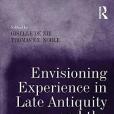《Envisioning Experience in Late Antiquity and the Middle Ages: Dynamic Patterns in Texts and Images》是一本圖書。
基本介紹
- 外文名:Envisioning Experience in Late Antiquity and the Middle Ages: Dynamic Patterns in Texts and Images
- ISBN:9781138261693
內容簡介
Our imagination reveals our experience of ourselves and our world. The late philosopher of science and poetry Gaston Bachelard introduced the notion that each image that comes to mind spontaneously is a visual representation of the cognitive and affective pattern that is moving us at the time - often unconsciously. When such a mental image inspires a picture or text, it evokes ...(展開全部) Our imagination reveals our experience of ourselves and our world. The late philosopher of science and poetry Gaston Bachelard introduced the notion that each image that comes to mind spontaneously is a visual representation of the cognitive and affective pattern that is moving us at the time - often unconsciously. When such a mental image inspires a picture or text, it evokes in the mind of the reader or beholder a replication of the internal pattern that originally inspired the artist or writer. Thus mental images are rarely empty phantasies. Whereas intellectual concepts are conscious constructions of abstracted relations, mental images evoked by texts and pictures often point - like dreams - to pre-verbal experience that patterns itself through multiplying associations and analogies. These mental images can also manifest their own limits, pointing indirectly to experiences beyond what can be expressed and communicated. The six essays in this volume seek to uncover the dynamic patterns in verbal and pictorial images and to evaluate their potentialities and limitations. Thematically ordered according to their specific focus, the essays begin with material images and move on to increasing degrees of immateriality. The subjects treated are: verbal descriptions of an icon and of a statue; imaginative visions and auditions evoked by material depictions; verbal imagery describing imagined sculptures and scenes as compared with drawings of a moving historical pageant; drawings of symbolic figures representing subtle relationships between verbal expositions that cannot

